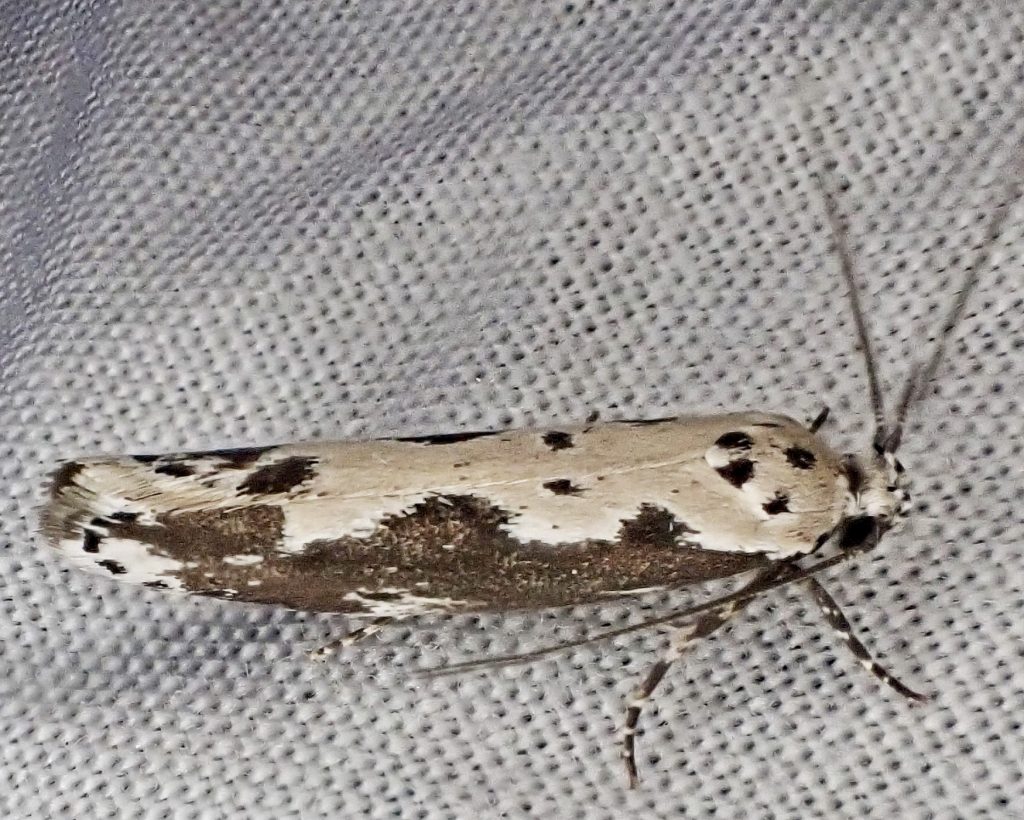
I may have mentioned before that I tend to avoid trying to identify most micromoths, because I don’t have the patience for it, usually find plenty of macros to bang my head against, and generally don’t need more frustrations in my life, but for some reason I like the Ethmia, probably because they are distinctive and relatively easy to identify. And of the Ethmia the one I encounter the most often is definitely Ethmia marmorea, and it is one of a small handful of micromoths that I can identify on sight.
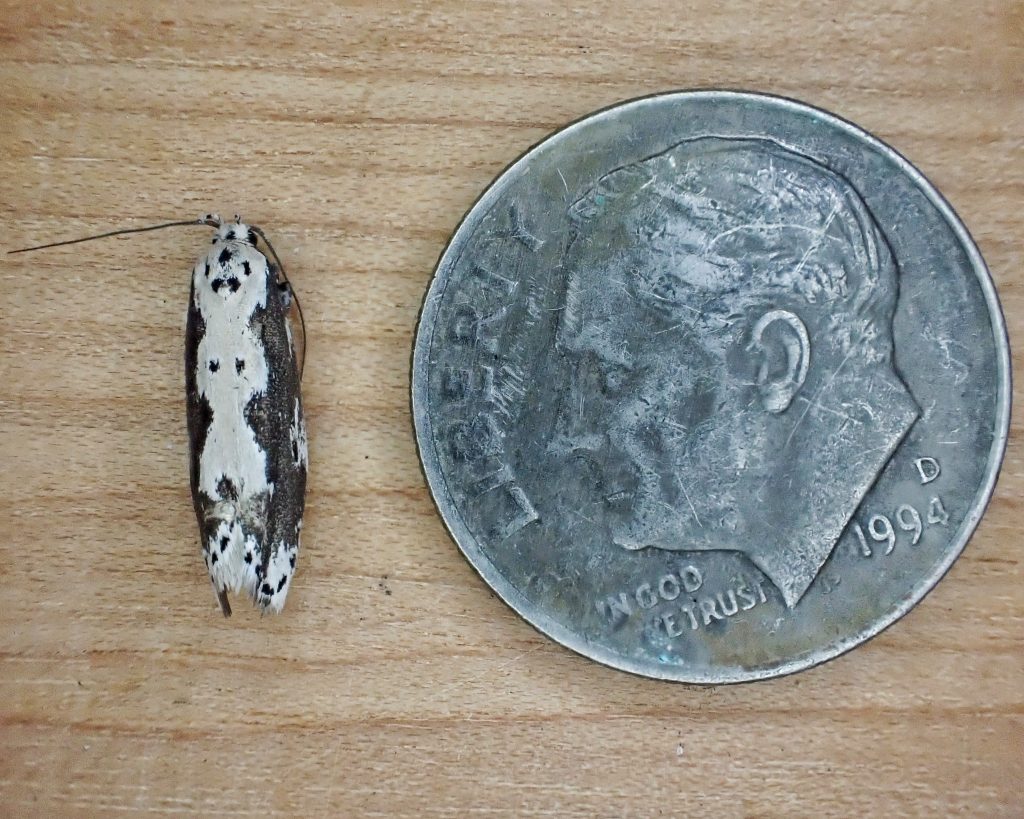
These are just very cool looking moths, handsome, and with a highly contrasting pattern that is immediately visible to the naked eye. Because they seem to me to be so abundant, I was surprised to learn how little we know about these little members of the family Depressariidae. Which I guess we can assume means that they are not a threat to anyone’s livelihood or a problem for gardeners, although it would be nice if we lived in a world where lifeforms were studied because they were living creatures, rather than only when they cause damage to the best laid plans of mice and men.
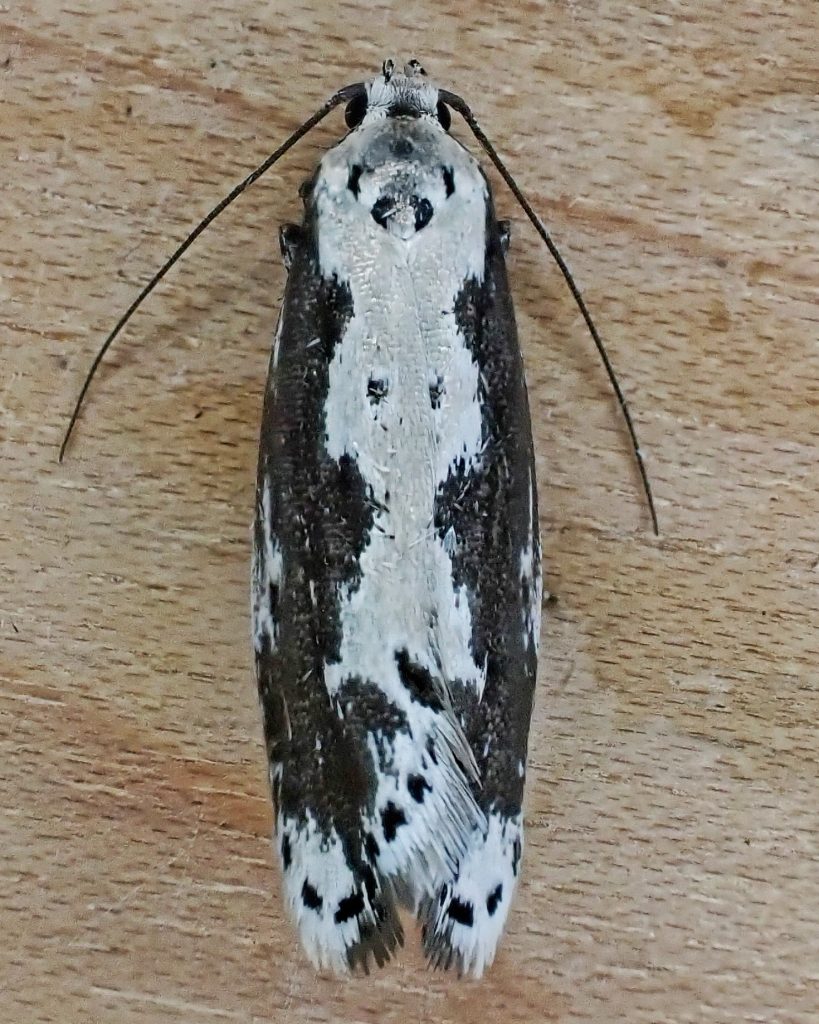
Description-Thorax is white with 5 black dots; “…forewing length 8.8 – 11.7 mm…broad white dorsal margin with 2-4 brownish black dots, the remainder pale to dark brown, usually with one or more whitish blotches along the costa” Species Ethmia marmorea – Hodges#1004 – BugGuide.Net
Similar species– Other Ethmia in our region are either much greyer (E. monticola, E discostrigella), lack distinct and isolated dots near the dorsal margin (E. arctostaphylella), have 6 spots on the thorax (E. semitenebrella) or lack the white blotch near the costa (E. sphenisca)
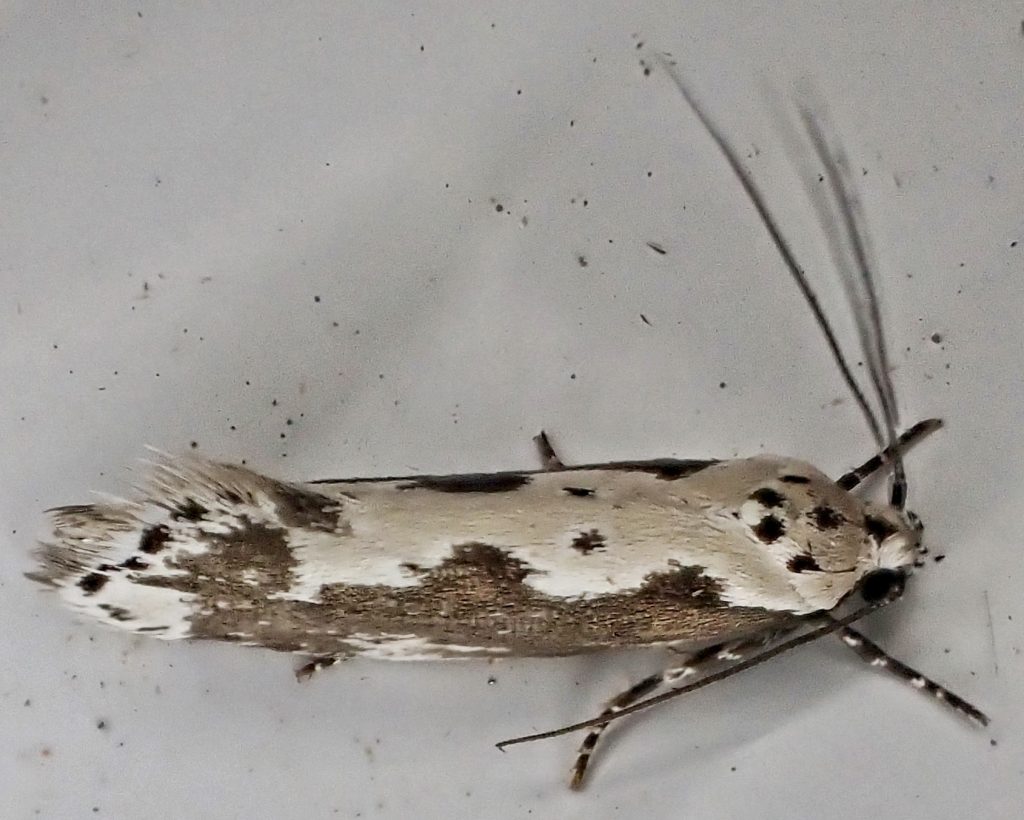
Habitat– I can find nothing definite for this species, but I found them during moth week in habitats ranging from urban and suburban back yards to Columbia River floodplain, conifer and mixed forests, and a montane riparian corridor, so apparently they are found wherever their larval hosts, which are probably members of Boraginaceae, are found.
Range– Western North America; probably more or less region wide in the PNW.
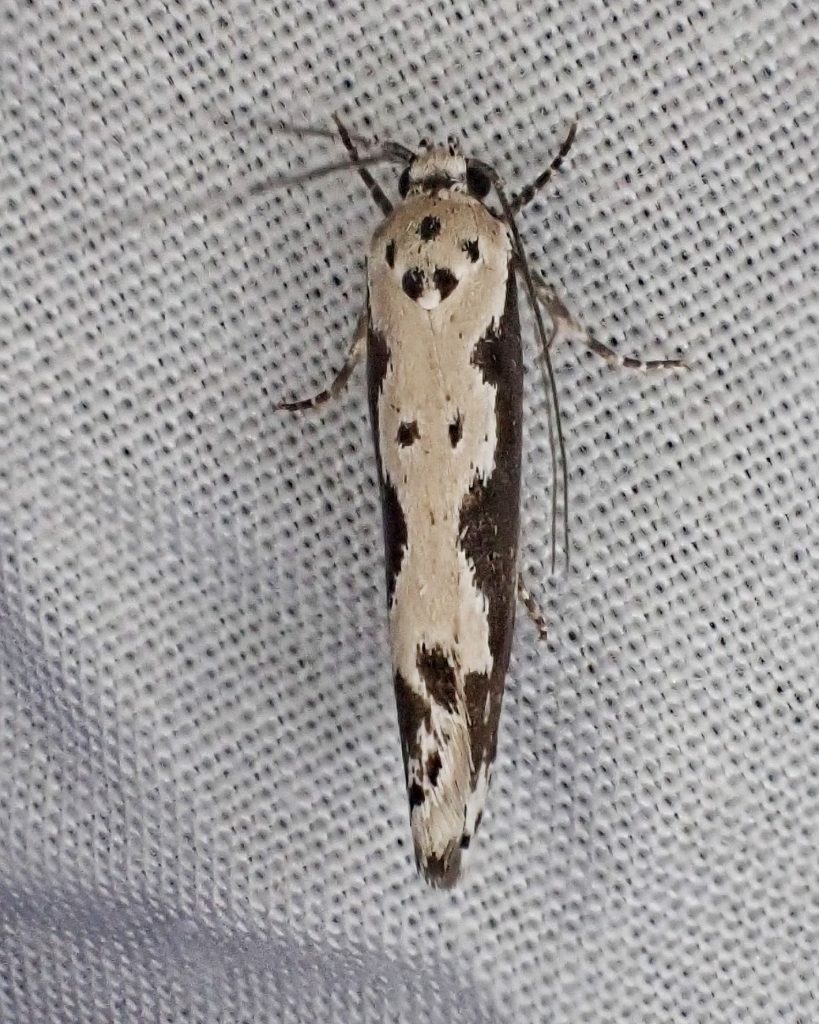
Eats– “About 80% of the species for which larvae are known worldwide feed on Boraginales (Boraginaceae, Ehreti- aceae, Hydrophyllaceae)”, but “nothing is known of the larval biology” of this species. Powell/Opler “Moths of Western North America”; 2009
Eaten by– Presumably a host for parasitoids in Hymenoptera and Diptera, and probably preyed upon by insectivores of all classes, but I can find nothing specific for this species.
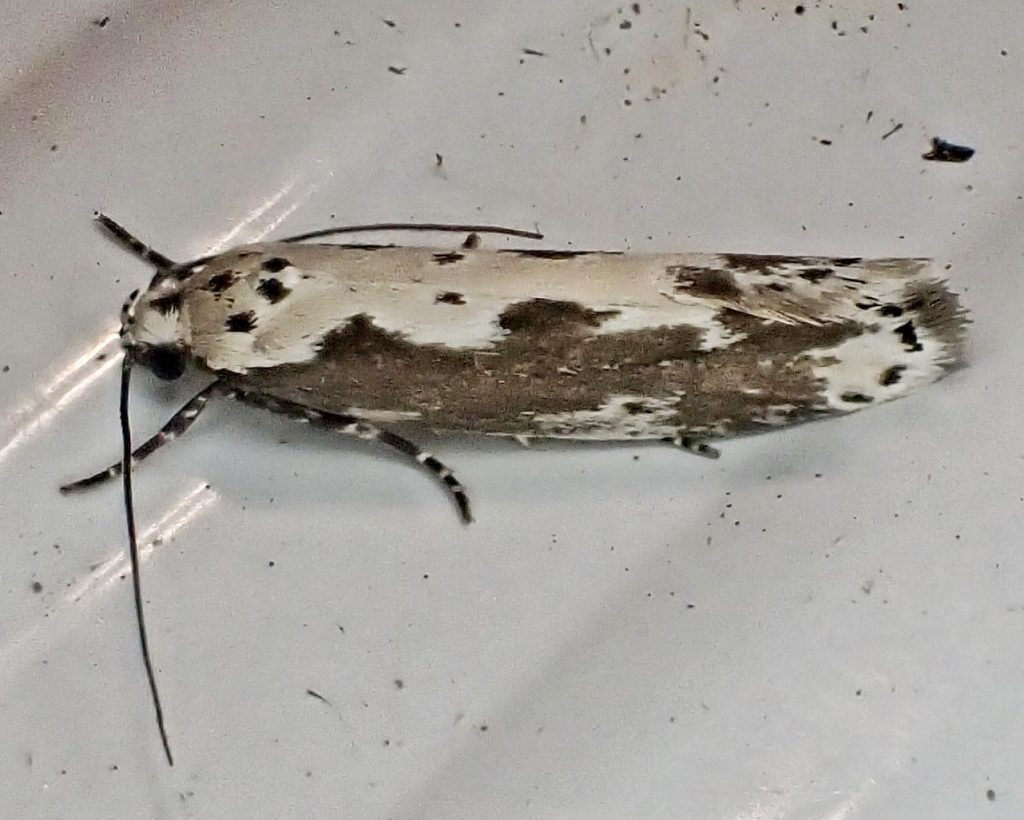
Adults active– Nocturnal; June through August
Life cycle– Apparently univoltine, but I can find no other information on the life cycle of this species.
Etymology of names– Ethmia is from the Greek word for ‘a sieve’, and possibly refers to the black dots on many members of the genus looking like holes in a colander. The specific epithet marmorea is from the Latin word for ‘marble’, and presumably refers to the marbled appearance of the forewing.
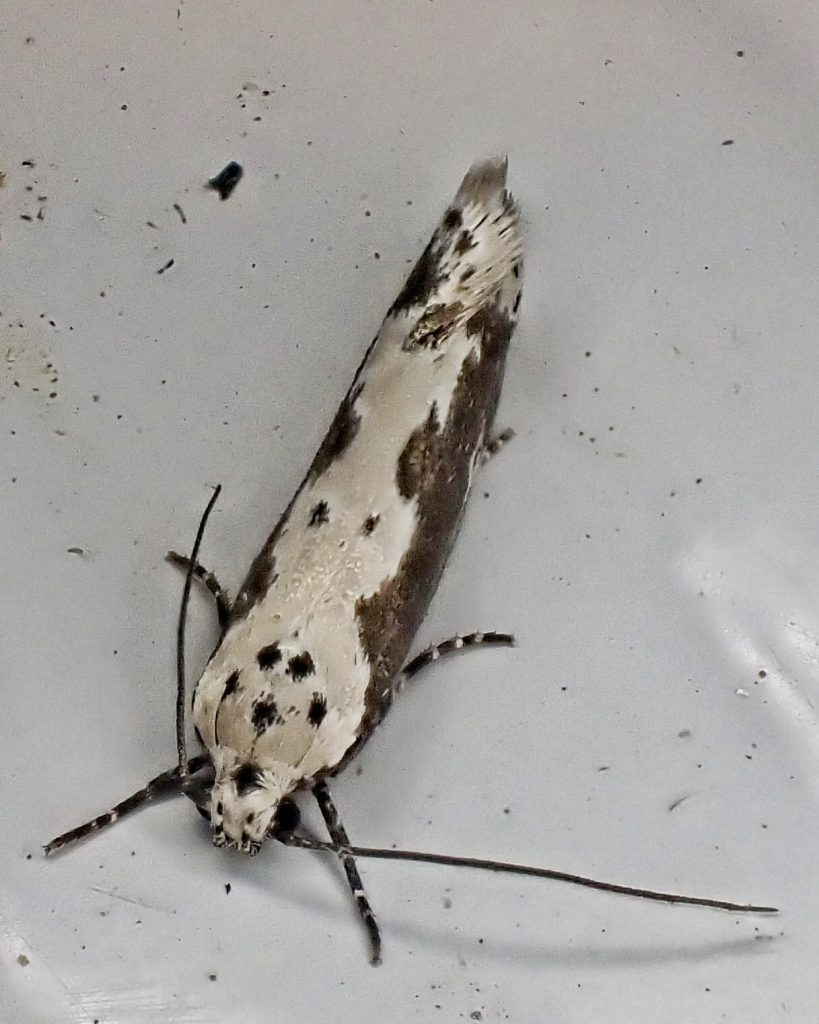
Species Ethmia marmorea – Hodges#1004 – BugGuide.Net
http://mothphotographersgroup.msstate.edu/species.php?hodges=1004&state=PNW
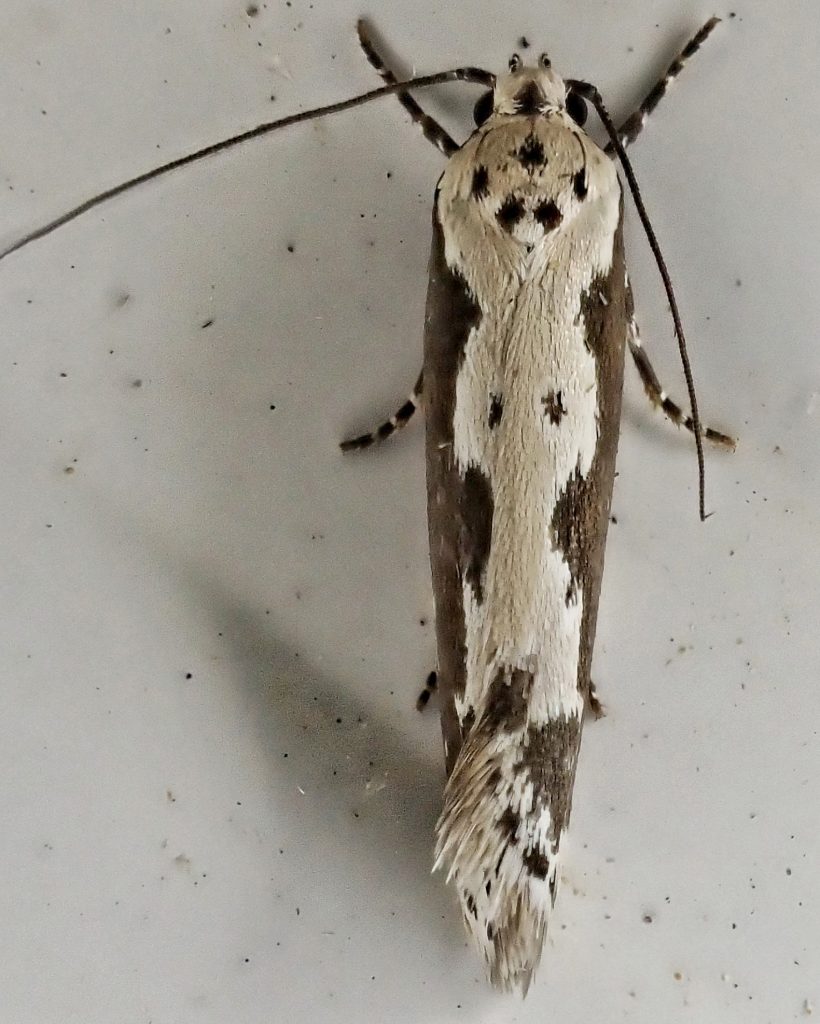
1 thought on “Ethmia marmorea”